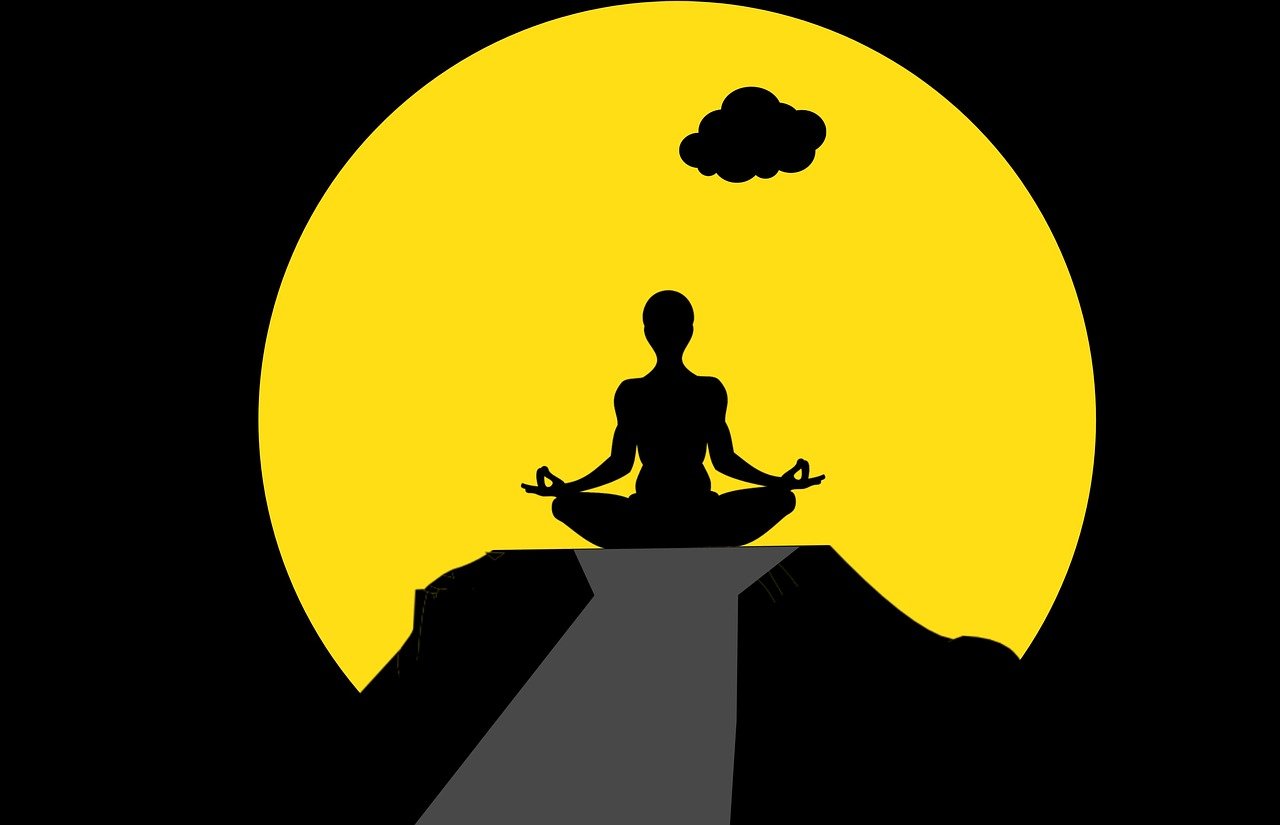In today’s hectic world, finding inner balance and peace of mind can be a challenge. However, through the practices of mindfulness and meditation, you can cultivate a sense of serenity and harmony within yourself. Mindfulness teaches you to be fully present in the present moment, while meditation allows you to quiet your mind and focus your thoughts. Together, these practices can help you achieve a state of inner balance, enabling you to navigate through life’s ups and downs with greater calmness and clarity. Embark on a journey of self-discovery and explore the transformative power of mindfulness and meditation in achieving inner tranquility.

Table of Contents
Understanding Mindfulness and Meditation
What is mindfulness?
Mindfulness is the practice of intentionally bringing one’s attention to the present moment without judgment. It involves being fully aware of your thoughts, feelings, bodily sensations, and surrounding environment. This state of mind allows you to cultivate a sense of acceptance and non-reactivity, enabling you to experience a deeper connection with yourself and the world around you.
What is meditation?
Meditation is a technique used to train the mind and promote relaxation, clarity, and emotional well-being. It involves focusing your attention and eliminating the stream of thoughts that may be crowding your mind. By engaging in meditation, you can develop mental clarity, concentration, and calmness. It is an ancient practice that has been used for centuries in various cultures and religions.
The connection between mindfulness and meditation
Mindfulness and meditation are closely related practices that complement each other. While mindfulness aims to cultivate present-moment awareness, meditation serves as a tool to develop this awareness. Through meditation, you can train your mind to observe your thoughts, emotions, and sensations without judgment. This practice enhances your ability to be mindful in everyday life, resulting in a greater sense of inner balance and well-being.
Benefits of Mindfulness and Meditation
Reducing stress and anxiety
Regular practice of mindfulness and meditation has been shown to significantly reduce stress and anxiety levels. By focusing on the present moment and letting go of worries about the past or future, you can experience a sense of calm and relaxation. Mindfulness and meditation help to rewire the brain and decrease the activation of the stress response, leading to reduced anxiety and improved overall mental health.
Improving focus and concentration
In today’s fast-paced world, it is common to feel scattered and unable to concentrate. Mindfulness and meditation offer a remedy by training the mind to stay focused on the present moment. By regularly practicing these techniques, you can enhance your ability to concentrate, improve memory, and increase mental clarity. This heightened focus not only benefits your professional life but also allows you to fully engage in your everyday activities and experiences.
Enhancing self-awareness
Mindfulness and meditation provide an opportunity for self-reflection and self-discovery. By observing your thoughts, feelings, and sensations without judgment, you gain a deeper understanding of yourself. This self-awareness allows you to identify negative patterns, beliefs, and behaviors that may be hindering your personal growth. With increased self-awareness, you can make conscious choices that are in alignment with your values and goals, leading to a greater sense of fulfillment and happiness.
Practicing Mindfulness
Choosing a quiet and comfortable space
When practicing mindfulness, it is essential to create a peaceful and distraction-free environment. Find a quiet space where you can sit comfortably and be free from interruptions. This could be a dedicated meditation room, a cozy corner in your home, or even a serene outdoor setting. Ensure that the space is clean, organized, and conducive to relaxation. By having a designated space for mindfulness practice, you can create a sense of sacredness and enhance your ability to focus.
Starting with focused breathing
Focusing on the breath is a fundamental aspect of mindfulness practice. Begin by taking a few deep breaths to relax your body and mind. Then, shift your attention to the natural rhythm of your breath. Observe the sensation of the breath as it enters and exits your body. Notice the rise and fall of your abdomen or the sensation of air flowing through your nostrils. Whenever your mind wanders, gently bring your attention back to the breath without judgment. This practice helps anchor your awareness in the present moment and cultivates a sense of calm and centeredness.
Observing thoughts and emotions without judgment
One of the core principles of mindfulness is observing your thoughts and emotions with non-judgmental awareness. As you sit in meditation, allow thoughts to arise without getting caught up in them. Imagine your thoughts as clouds passing through the vast sky of your mind. Observe them with curiosity and detachment, acknowledging their presence without becoming attached or reacting to them. Similarly, when emotions arise, allow them to be experienced fully without trying to suppress or control them. By developing a gentle and non-reactive attitude towards your thoughts and emotions, you cultivate a sense of spaciousness and acceptance within yourself.
Different Types of Meditation
Focused attention meditation
Focused attention meditation involves concentrating your attention on a single object or anchor, such as the breath, a mantra, or a visualization. The goal is to train your mind to stay focused on the chosen object, without being carried away by distractions. Whenever your attention drifts, gently bring it back to the object of focus. This type of meditation enhances concentration and can be particularly helpful for those seeking to improve their focus, memory, and attention span.
Loving-kindness meditation
Loving-kindness meditation, also known as metta meditation, involves the cultivation of love, compassion, and kindness towards oneself and others. It typically begins by directing loving and positive thoughts towards yourself, gradually expanding to include loved ones, acquaintances, and even difficult individuals. The practice involves silently repeating phrases such as “May I be happy, may I be healthy, may I live with ease,” while extending these well-wishes to others. Loving-kindness meditation fosters feelings of empathy, connection, and goodwill, promoting greater emotional well-being and harmonious relationships.
Transcendental meditation
Transcendental meditation (TM) is a widely practiced form of meditation that involves the use of a mantra—a specific sound, word, or phrase—to achieve a state of deep relaxation and transcendence. During TM, the mantra is silently repeated, allowing the mind to enter a state of profound stillness and inner peace. TM is often practiced for 15-20 minutes twice a day, and its benefits include stress reduction, increased creativity, improved cognitive and physiological functioning, and enhanced overall well-being.

Incorporating Mindfulness and Meditation into Daily Life
Establishing a regular practice
To fully experience the benefits of mindfulness and meditation, it is important to establish a regular practice. Set aside a specific time each day, even if it is just a few minutes, to dedicate to your practice. Consistency is key, so choose a time that works best for you and make it a non-negotiable part of your routine. Consider starting with shorter sessions and gradually increasing the duration as you become more comfortable. By committing to a regular practice, you create space for self-reflection, inner peace, and personal growth.
Bringing mindfulness to daily activities
While dedicated meditation sessions are essential, it is equally important to extend mindfulness to your everyday activities. Whether it’s brushing your teeth, eating a meal, or walking in nature, bring your full attention to the present moment. Notice the sensation of water on your skin, the taste and texture of your food, or the feeling of the earth beneath your feet. By infusing mindfulness into mundane tasks, you cultivate a greater sense of presence, appreciation, and joy in every aspect of your life.
Finding guidance through apps and resources
If you’re new to mindfulness and meditation, you may find it helpful to seek guidance from various resources. There are numerous meditation apps available that offer guided meditations, timers, and reminders to support your practice. These apps often provide a wide range of meditation styles and themes, allowing you to explore what resonates with you. Additionally, books, podcasts, and online courses can provide valuable insights and teachings from experienced practitioners and teachers. Embrace these resources as tools to deepen your understanding and enhance your practice.
Research on Mindfulness and Meditation
Scientific studies on the benefits
Over the past few decades, there has been a growing body of scientific research on the benefits of mindfulness and meditation. Numerous studies have demonstrated the positive effects of these practices on physical health, mental well-being, and cognitive functioning. Research has shown that mindfulness and meditation can reduce stress, improve immune function, promote emotional regulation, increase compassion, and enhance overall resilience. The scientific evidence continues to grow, providing tangible proof of the transformative power of mindfulness and meditation.
Effectiveness in managing chronic pain
Chronic pain can significantly impact a person’s quality of life. However, mindfulness and meditation have been found to be effective in managing and reducing the perception of chronic pain. By cultivating present-moment awareness and developing non-reactivity towards pain sensations, individuals can experience relief and improved pain management. Mindfulness-based interventions, such as Mindfulness-Based Stress Reduction (MBSR) and Mindfulness-Based Cognitive Therapy (MBCT), have been shown to alleviate chronic pain symptoms and enhance overall well-being.
Impact on mental health conditions
Mindfulness and meditation have shown promising results in the treatment and management of various mental health conditions. Research indicates that these practices can reduce symptoms of depression, anxiety, post-traumatic stress disorder (PTSD), and attention-deficit/hyperactivity disorder (ADHD). Mindfulness-based interventions have been incorporated into therapeutic modalities, such as Cognitive Behavioral Therapy (CBT), to enhance their effectiveness. By cultivating awareness, acceptance, and self-compassion, individuals can develop healthier coping strategies and experience improved mental health outcomes.

Mindfulness and Meditation Retreats
Overview of retreats and their purpose
Mindfulness and meditation retreats offer an immersive and contemplative experience for individuals seeking a deeper dive into their practice. These retreats provide a dedicated space and time away from daily life to cultivate mindfulness, explore different meditation techniques, and connect with like-minded individuals. Retreats can range from weekend getaways to extended retreats lasting weeks or even months. They often involve a structured schedule of meditation sessions, guided teachings, mindful movement practices, and periods of silence. The purpose of retreats is to provide a supportive and transformative environment for individuals to deepen their practice and cultivate inner balance.
Choosing the right retreat for your needs
When selecting a mindfulness and meditation retreat, it is important to consider your personal preferences, goals, and level of experience. Retreats vary in their intensity, focus, and style, so take time to research and read reviews to find a retreat that aligns with your needs. Consider factors such as the location, duration, retreat leaders, accommodation, and overall ambiance. Some retreats may be geared towards beginners, while others may cater to experienced practitioners. Take into account the retreat format, whether it involves a silent retreat, a themed retreat, or a combination of different practices. By selecting a retreat that resonates with you, you can create an enriching and transformative experience.
Preparing for a retreat experience
Preparing for a mindfulness and meditation retreat involves both practical and mental readiness. Ensure that you have all necessary arrangements made, such as transportation, accommodation, and any specific dietary requirements. Familiarize yourself with the retreat guidelines and expectations to ensure a smooth experience. Mental preparation involves setting clear intentions for the retreat and being open to the process of self-reflection and growth. Prepare physically by maintaining a regular meditation practice leading up to the retreat. Lastly, approach the retreat with an open mind, a curious heart, and a willingness to fully participate in the experience.
Challenges and Solutions in Mindfulness and Meditation
Difficulty maintaining consistency
One of the common challenges faced in mindfulness and meditation practice is maintaining consistency. Life’s demands and distractions often make it difficult to establish a regular practice. To overcome this challenge, it can be helpful to set realistic goals and start with shorter sessions that are easier to incorporate into your daily routine. Use reminders and create cues to trigger your practice, such as placing a meditation cushion in a visible spot or setting a consistent time each day. Find an accountability partner or join a meditation group to stay motivated and inspired. Remember, even a few minutes of daily practice can have a significant impact on your well-being.
Dealing with distractions during practice
During meditation, distractions can arise in various forms, such as external noises, physical discomfort, or wandering thoughts. It is important to approach these distractions with patience and non-judgment. When external noises disrupt your practice, acknowledge them without becoming irritated or trying to control them. Use earplugs or choose a quieter location if necessary. If physical discomfort arises, make gentle adjustments to your posture or use props to support your body. When the mind wanders, gently bring your attention back to your chosen object of focus, such as the breath or a mantra. Remember that distractions are a natural part of the meditation process, and each moment of awareness is an opportunity to strengthen your practice.
Addressing skepticism and doubts
Some individuals may approach mindfulness and meditation with skepticism or doubts about its effectiveness. It is important to recognize that everyone’s experience is unique, and what may work for one person may not resonate with another. If you encounter skepticism, approach mindfulness and meditation with an open mind and a willingness to explore. Educate yourself by reading books, scientific studies, or personal testimonials to understand the potential benefits. Consider starting with shorter guided meditations or attending an introductory workshop to gain firsthand experience. Over time, as you observe the positive effects on your own well-being, any doubts or skepticism may naturally dissipate.

Cultivating Mindfulness and Meditation with Others
Joining meditation groups or classes
Joining a meditation group or attending meditation classes can provide valuable support and a sense of community. Meditating with others can deepen your practice and provide motivation and accountability. In a group setting, you can benefit from the collective energy and focus, making it easier to maintain your own practice. Meditation groups or classes also offer the opportunity to learn from experienced teachers, ask questions, and receive guidance and feedback. Whether in-person or online, these communities provide a safe and supportive space for individuals to connect and grow together.
Practicing mindfulness in relationships
Mindfulness can greatly enhance your relationships by fostering deeper connection, compassion, and understanding. By bringing mindful awareness to your interactions, you can cultivate empathy, active listening, and non-reactivity. Practice fully being present when engaging with loved ones, giving them your undivided attention and showing genuine interest in their experiences. Notice any emotional reactions that arise and respond with kindness and understanding. By practicing mindfulness in relationships, you can foster healthier communication, strengthen emotional bonds, and create a more harmonious connection with others.
Sharing experiences and insights
Sharing your mindfulness and meditation experiences with others can be enriching and inspiring. Discussing your practice with friends, family, or fellow practitioners allows you to exchange insights, challenges, and triumphs. By sharing your experiences, you may offer guidance and support to those who are new to mindfulness or seeking to deepen their practice. Additionally, participating in mindfulness retreats, workshops, or online forums provides opportunities to connect with like-minded individuals and build a network of support and encouragement. Remember that every individual’s journey is unique, and by sharing, you contribute to a collective growth and understanding.
Creating an Inner Balance with Mindfulness and Meditation
Integrating mindfulness into self-care routines
Self-care is essential for maintaining overall well-being, and mindfulness can play a transformative role in self-care practices. By incorporating mindfulness into activities such as bathing, journaling, or engaging in hobbies, you can bring a sense of presence and intention to these moments. Pay attention to the sensory experience, savoring each sensation and being fully immersed in the present moment. Observing self-care rituals with mindful awareness enhances their effectiveness in nourishing your mind, body, and spirit.
Exploring meditation techniques for emotional well-being
Meditation offers a range of techniques that can support emotional well-being. For example, when dealing with strong emotions such as anger or sadness, you can practice focused breathing or loving-kindness meditation to cultivate a sense of calm and compassion. Body scan meditation can help you explore physical sensations and emotional connections within your body, allowing for greater self-awareness and release. By exploring different meditation techniques, you can develop resources to manage and navigate your emotions, fostering emotional balance and resilience.
Developing a sense of inner peace
One of the ultimate goals of mindfulness and meditation is to cultivate inner peace. By regularly practicing mindfulness and meditation, you can develop a deeper connection with yourself, your thoughts, and your emotions. This connection enables you to cultivate a profound sense of peace and equanimity that transcends external circumstances. Cultivating inner peace involves letting go of attachment to outcomes, practicing non-judgment, and embracing acceptance. Through mindfulness and meditation, you can find solace in the present moment and experience a sense of inner balance and serenity amidst the ups and downs of life.
In conclusion, mindfulness and meditation offer powerful tools for achieving inner balance and enhancing overall well-being. By understanding the concepts of mindfulness and meditation, exploring their benefits, and incorporating them into daily life, you can cultivate a deeper connection with yourself and the world around you. Overcoming challenges, seeking support from others, and creating space for mindfulness and meditation in your life can lead to transformative experiences and a greater sense of peace and fulfillment. Embrace these practices as lifelong companions on your journey towards achieving inner balance.
